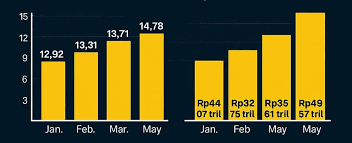🌱 Tether Goes Green: Powers Bitcoin Mining with Renewable Energy in Brazil. By ChainFabricNews
 |
| Image source: CryptoSlate |
In a move that’s turning heads across the crypto and clean energy worlds, Tether, the company behind the world’s most-used stablecoin USDT, is making big waves in Brazil. In July 2025, Tether announced a surprising but innovative partnership—buying a 70% stake in Adecoagro, a major South American agricultural and renewable energy company.
Why does a crypto company want to partner with a farming business? The answer lies in energy—and Bitcoin.
🔋 From Sugarcane to Satoshi
Adecoagro produces electricity from renewable sources like sugarcane biomass, wind, and solar. But much of that energy often goes unused. Tether saw an opportunity here: Instead of letting that clean power go to waste, why not use it to mine Bitcoin?
Together, Tether and Adecoagro plan to launch a fully green Bitcoin mining operation in Brazil. This means crypto mining powered entirely by renewable energy—no coal, no oil, just sustainable power.
And it’s not just a small side project. Adecoagro has over 230 megawatts of clean energy capacity. That’s enough to power thousands of mining machines and could represent up to 1.6% of the global Bitcoin network. In other words, this is a serious step toward eco-friendly crypto.
🧠 A Smart Strategy for Both Worlds
This partnership isn’t just good for the planet—it’s smart business.
-
For Adecoagro, it creates a new revenue stream. By using its extra energy to mine Bitcoin, it can earn more money from power that would’ve gone unused.
-
For Tether, it expands their business beyond just stablecoins. They’re investing in the real world—in energy, agriculture, and infrastructure.
Tether also plans to use its own open-source Mining OS, a platform designed to optimize Bitcoin mining using renewable power. This not only improves efficiency but also invites other companies to follow the same green path.
🌍 Why This Matters for Crypto
Bitcoin often gets a bad name for being energy-hungry. Critics say it harms the environment because it uses so much electricity—sometimes from dirty sources. But Tether’s Brazil project shows it doesn’t have to be that way.
By running on clean energy, this mining operation is setting a powerful example for the industry. It proves that blockchain and sustainability can go hand in hand.
This also comes at a time when Brazil is becoming a growing hub for crypto adoption and innovation. With high internet usage, a young population, and strong interest in digital finance, the country is ripe for transformation.
📈 What’s Next?
The pilot mining site is just the beginning. If it succeeds, Tether and Adecoagro could expand even more, making Brazil a leader in eco-conscious crypto mining.
It’s a bold vision—one where renewable energy and digital currency work together, not against each other. And if more companies follow this model, the future of crypto could be not only decentralized and borderless but also clean and sustainable.
Bottom Line:
Tether’s new venture in Brazil isn’t just about mining Bitcoin—it’s about mining it better. With renewable energy, smart partnerships, and real-world impact, this is the kind of progress the crypto world needs—and the planet deserves.



Comments
Post a Comment